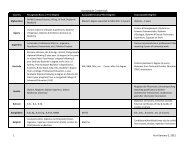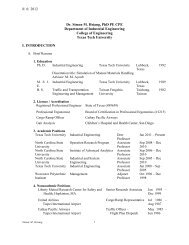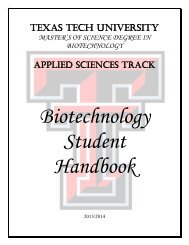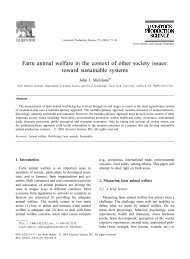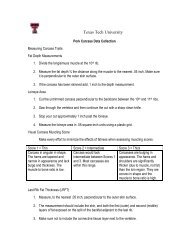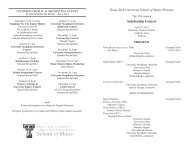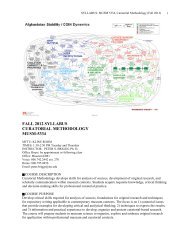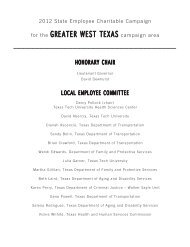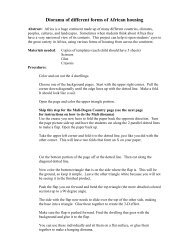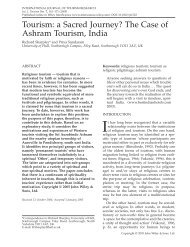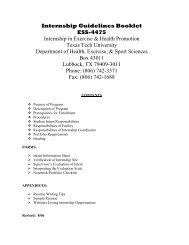Development of Tour Uriely 2005
Development of Tour Uriely 2005
Development of Tour Uriely 2005
Create successful ePaper yourself
Turn your PDF publications into a flip-book with our unique Google optimized e-Paper software.
204 THE TOURIST EXPERIENCE<br />
A similar process <strong>of</strong> de-differentiation between tourism and the routine<br />
<strong>of</strong> everyday life is delineated by Munt who argues that ‘‘tourism is<br />
everything and everything is tourism’’ (1994:104). Specifically, he mentions<br />
the growing tendency to combine a variety <strong>of</strong> activities, such as<br />
adventure trekking, climbing, skiing, and mountain biking with tourism.<br />
More significantly, he stresses penetrations, such as the proliferation<br />
<strong>of</strong> ecological, archeological, anthropological, and scientific types<br />
<strong>of</strong> tourism. In addition to the ‘‘intellectualization’’ he points out a<br />
process <strong>of</strong> ‘‘pr<strong>of</strong>essionalization’’ in the consumption <strong>of</strong> tourism. In this<br />
context, Munt suggests that the separation <strong>of</strong> occupational pr<strong>of</strong>essionalism<br />
and the consumption <strong>of</strong> tourism are beginning to blur. With respect<br />
to the penetration by occupational features, Munt mentions the<br />
development <strong>of</strong> tourism codes <strong>of</strong> ethics by travel-related and environmental<br />
organizations, such as <strong>Tour</strong>ism Concern and Green Flag International.<br />
At the same time, he describes the growth <strong>of</strong> outdoor training<br />
programs designed for managers as an example <strong>of</strong> the incorporation <strong>of</strong><br />
tourism practices in the work and pr<strong>of</strong>essional domain.<br />
The notion <strong>of</strong> tourism/leisure and work as contradicting experiences<br />
is also challenged by Ryan (2002) who points toward the invasion<br />
<strong>of</strong> leisure and recreation-related aspects into the workplace <strong>of</strong> s<strong>of</strong>twarebased<br />
industries, including gymnasia, spas, showers, and skateboard<br />
spaces. In another study, Ryan and Birks (2000) address the inclination<br />
<strong>of</strong> business tourists to combine tourism pursuits, such as seeing friends<br />
and relatives, attending sport events, or taking a holiday, during their<br />
work-related trips. Similarly, the interaction between work and tourism<br />
is extensively introduced in recent studies that focus on situations in<br />
which work-related and tourist-oriented activities are combined<br />
(Pizam, <strong>Uriely</strong> and Reichel 2000; <strong>Uriely</strong> 2001; <strong>Uriely</strong> and Reichel<br />
2000). In this context, a typology <strong>of</strong> tourists who combine work and<br />
tourist pursuits during their excursion is developed (<strong>Uriely</strong> 2001).<br />
Based on the meanings that these tourists assign to their experiences,<br />
four categories are depicted on a continuum from the most work-oriented<br />
to the most tourist-oriented: ‘‘touring pr<strong>of</strong>essional workers’’,<br />
who are mainly oriented toward work-related purposes and engage in<br />
tourist-oriented activities only as a by-product <strong>of</strong> their excursion; ‘‘migrant<br />
tourism workers’’, who travel in order ‘‘to make a living’’ and<br />
‘‘have fun’’ at the same time; ‘‘noninstitutionalized working-tourists’’,<br />
who engage in work while traveling in order to finance a prolonged<br />
trip; and, ‘‘working-holiday tourists’’, who perceive their work engagement<br />
as recreational that is part <strong>of</strong> their tourist activities. In line with<br />
these orientations, members <strong>of</strong> the two former types <strong>of</strong> tourists are referred<br />
to as ‘‘travelling workers,’’ and members <strong>of</strong> the two latter ‘‘working<br />
tourists’’ (<strong>Uriely</strong> 2001).<br />
Pluralizing the Experience. As part <strong>of</strong> an attempt to capture the essence<br />
<strong>of</strong> tourism, early conceptualizations were not concerned with the variety<br />
<strong>of</strong> meanings and motivations. Thus, while different seminal theorists,<br />
such as Boorstin (1964), MacCannell (1973), and Turner<br />
(1973), proposed different conceptualizations regarding the nature<br />
<strong>of</strong> the tourist experience in modern society, all <strong>of</strong> them presented<br />
homogenizing portrayals <strong>of</strong> it as a general type. This scholarly inclina-



